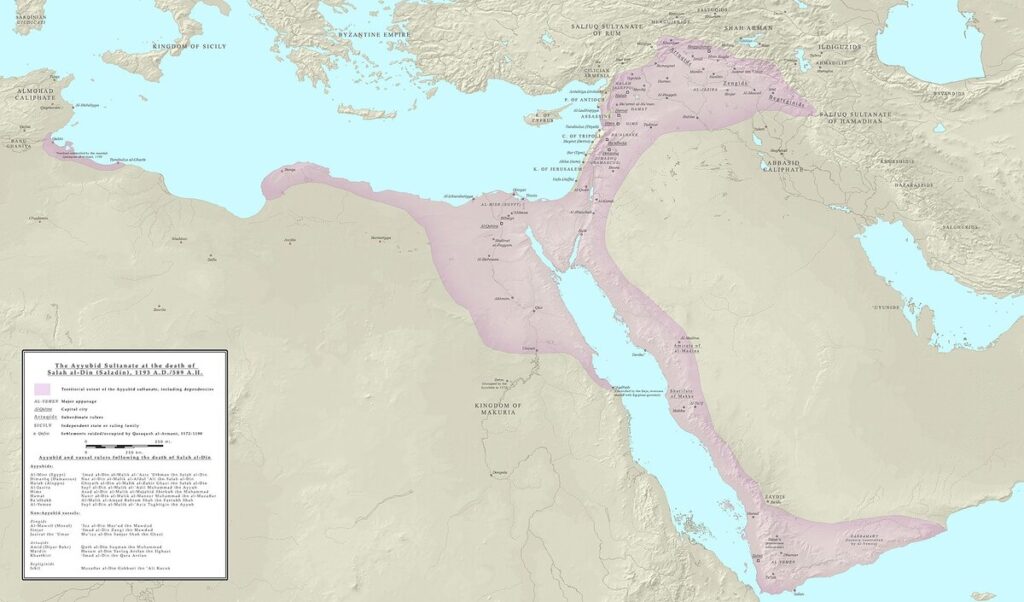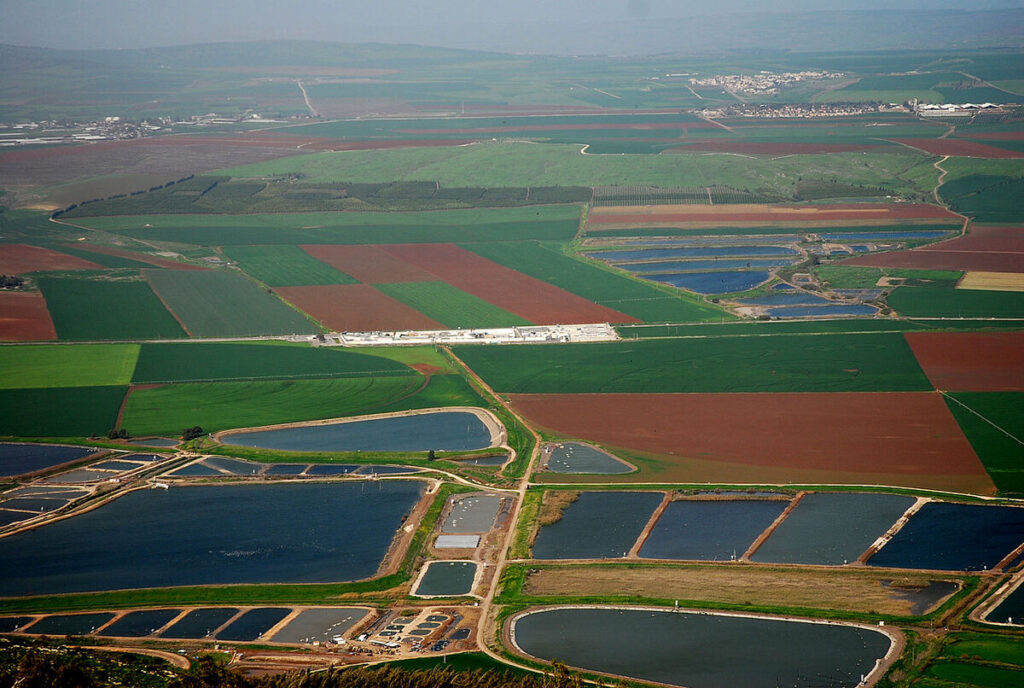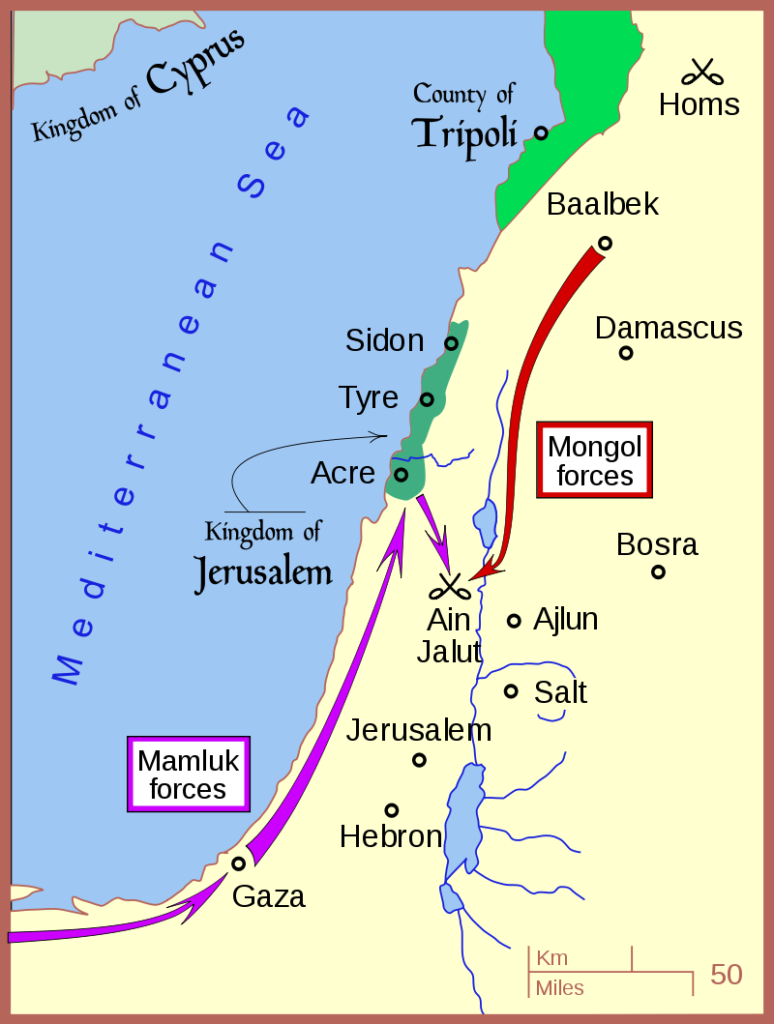In 1256, the Mongols began a Western campaign in the Middle East. Hulagu, the brother of the great kagan Mongke, commanded the campaign. In February 1258, with the help of 4 thousand Chinese engineers, Baghdad was taken and the Mongols got the huge treasures of the Abbasid Caliph Mustansir.

Munke, Mongke, Mengu (1208 — August 11, 1259, Chongqing) was the fourth great khagan (1251-1259) of the Mongol Empire, grandson of Genghis Khan, son of Tolui and Sorkaktani begi, brother of Kublai, Hulagu and Arig bugi. He is known to the medieval West for his participation in the Western Campaign of the Mongols in 1236-1242, during which the Mongol army reached the Adriatic. The literal meaning of the khan’s name is Eternal Khan.
After the fall of Baghdad, the Mongol sword hung over the world of Islam
Mamluk Egypt remained the only Muslim power that could resist the Mongols.
At the same time, most of the Egyptian population at that time were Coptic Christians. Just like in Syria and the Levant (eastern Mediterranean coast)
But there were Mamluks in Egypt.

The Mamluks (also Mamelukes, Arabic. مملوा, belonging to) were a military class in medieval Egypt, recruited from young slaves of Turkic (Kipchaks) and Caucasian (Circassians, Abkhazians, Georgians and others) origin.
The Mamluks came to the slave markets from the Mongols, who sold them to Muslim merchants. Of course, this could not arouse positive emotions towards the Mongols in the Mamluks.
The Mamluks were very well prepared for war and they were capable of both foot and horse combat in formation. In addition, they were trained in engineering and military management. Therefore, each Mamluk was already a ready-made commander, literate and educated (literacy and poetry were included in the training).
In 1250, the Mamluks overthrew the Ayyubid dynasty and began to rule Egypt.

The Ayyubids (Eyyubids) (Arabic: الأيوبيون) were a medieval Muslim dynasty of Middle Eastern rulers of Kurdish origin (1169-1525). Representatives of the main line of the Ayyubid dynasty ruled Egypt (1169-1252, from 1174 with the title Sultan), while being suzerain for the side lines of the dynasty that ruled in different regions of the Middle East (Palestine, Syria, Iraq, Arabia, Asia Minor).
At the end of 1259, Hulagu crossed the Euphrates and fell on the lands of the Syrian Ayyubids.
In January 1260, the Mongols took Aleppo, the capital of the Syrian Ayyubids. After that, Damascus was captured and the Ayyubid state began to fall apart before our eyes. Local emirs swore allegiance to the Mongols, with whom the Crusaders also entered into an alliance. There were also detachments of Georgians and Armenians in the Mongolian army. Thus, the Mongol campaign was essentially a new crusade against Muslims that could destroy the Islamic world.
But then providence intervened, which saved the Muslim East.
After receiving news of the death of the great Mongke Khan in early spring 1260 (August 11, 1259), Hulagu decided to retreat to Iran with most of the army. Kitbuka was appointed commander of the remaining troops. Retreating, Hulagu sent an embassy to the Mamluk Sultan Kutuz in Cairo demanding submission. In response to the ultimatum, Kutuz, on the initiative of Baybars, ordered the execution of the ambassadors and prepare for war — Wikipedia
Kitbuka had 10,000 Mongols, 500 Armenian heavily armed horsemen, 500 Frankish knights and small detachments from local feudal lords. In total, there are about 12 thousand soldiers.
14 thousand Mamluks marched against Kitbuka.
And at this crucial moment, the Mongols were betrayed by the crusaders. They led the Mamluks through the desert and provided them with water. Therefore, the Mamluks passed through the desert without exhausting their strength.
The Mamluks and Mongols met in the Jezreel Valley.

The Jezreel Valley (Hebrew: עמק יררעאל, Emek Jezreel; Arabic. Marj ibn Amer (also Jezreel Valley, Ezrelon Valley, Megiddo Valley) is a valley in the Lower Galilee, Israel.
At first, the Armenian horsemen engaged in battle with the Mamluk patrols.
While the advance troops were fighting, both sides began to deploy their ranks.
The Mamluks concentrated only part of the army in front of the narrow valley. It was headed by Baybars. The rest of them were located deep in the valley, setting up an ambush.

Az-Zahir Beybars al-Bundukdari (Arabic: الظاهرايبرس البندمداري; 1223 — July 1, 1277, Damascus) was the Mamluk Sultan of Egypt and Syria (1260-1277) from the Bahrit dynasty. The most significant successes in repelling the aggression of the Iranian Ilkhanate and the crusaders of the West were achieved under Sultan Baybars, an outstanding commander of the Middle East, who was popularly nicknamed Abul-Futuh, that is, the «Father of Victories». Also known as Baybars I.
During several attacks, the Mongols were able to push back the Mamluks and, retreating, led them to an ambush. The Mongols came under attack from three sides.
The Mamluks shot the Mongols from the hills, and they suffered heavy losses.
Then Kitbuka led the knights into battle, who began to push the Mamluks into the center of the ambush. Only Kutuz’s personal courage was able to save the center and the Mamluks repulsed the knights, and then began to crowd them themselves.

Al-Malik al-Muzaffar Sayf id-Din Kutuz (? — October 24, 1260) was a Mamluk sultan of Egypt (1259-1260) from the family of Khorezmshahs-Anushteginids
Gradually, the retreat of the Mongols turned into flight. Kitbuka tried to stop the troops, which played a bad joke on them — the Mongols were surrounded.
Kitbuka was killed and the destruction of the Mongol troops began. But still, some of the Mongols managed to escape and go to Syria.
This is how the Mamluk Kipchaks were able to save the world of Islam from Mongol subjugation.

The Battle of Ain Jalut was a battle on September 3, 1260 between the Egyptian Mamluk army under the command of Sultan Kutuz and Emir Baybars and the Mongol corps from the Hulagu army under the command of Kitbuk Noyon. The Mongols were defeated, and Kitbuka was executed. The battle took place in the Jezreel Valley near the source of Ain Jalut (Arabic. «the source of Goliath»; Hebrew. Ein Harod), located at the northwestern foot of the Gilboa Ridge, west of the village of Gidona, about 15 km northwest of the city of Beit She’an, Israel (Ma’an Harod Park). In military history, this place is also known for the clash between Salah al-Din and the Franks in September 1183.
The defeat of the Mongols was complete. The next attempts to capture the Levant and Syria will be only in the 1270s.
